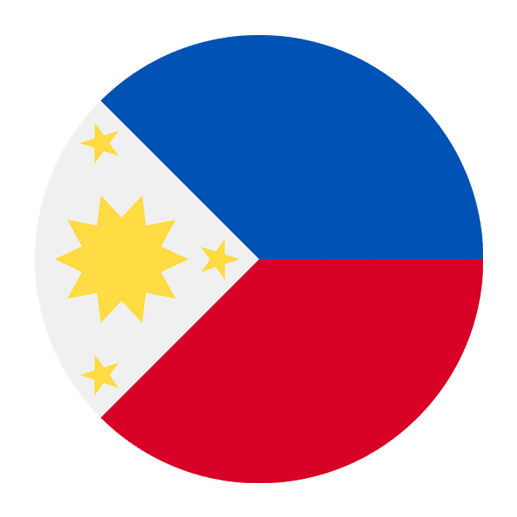Learning a new language can be a thrilling yet challenging experience. For English speakers eager to learn Tagalog, the primary language of the Philippines, various digital tools can make this journey easier and more enjoyable. Tagalog is rich in history and culture, and mastering it can open doors to deeper connections with Filipino friends, business opportunities, and a better understanding of the Philippines’ vibrant culture. In this article, we will explore the top seven Tagalog learning apps that can help you on your language-learning journey.
1. Talkpal
Talkpal stands out as one of the top AI language learning tools for Tagalog. This app leverages artificial intelligence to create a personalized learning experience. Here are some features that make Talkpal a top choice:
Interactive Conversational Practice: Talkpal uses AI to simulate real-life conversations, allowing you to practice speaking and listening in a natural context. This helps build your confidence and fluency in Tagalog.
Customizable Learning Paths: The app adapts to your learning pace and style. Whether you’re a beginner or looking to enhance your existing skills, Talkpal offers tailored lessons to meet your needs.
Instant Feedback: With real-time corrections and feedback, you can quickly identify and correct mistakes, leading to more effective learning.
Cultural Insights: Understanding a language is not just about grammar and vocabulary; it’s also about culture. Talkpal includes cultural notes and tips to help you understand the nuances of Tagalog.
2. Rosetta Stone
Rosetta Stone is a well-known name in language learning, and its Tagalog course lives up to the brand’s reputation. This app uses a unique immersion method to teach languages, including Tagalog.
Immersive Learning: Rosetta Stone’s method focuses on teaching through context rather than translation. This means you’ll learn to think in Tagalog rather than translating from English.
Speech Recognition Technology: The app includes a speech recognition feature to help you perfect your pronunciation. It gives you immediate feedback, ensuring you speak Tagalog accurately.
Comprehensive Curriculum: The course covers all aspects of the language, including speaking, listening, reading, and writing. This holistic approach ensures you develop a well-rounded proficiency in Tagalog.
Offline Access: With Rosetta Stone, you can download lessons and practice offline, making it convenient to learn Tagalog anytime, anywhere.
3. Pimsleur
Pimsleur is another excellent tool for learning Tagalog, especially for those who prefer audio-based learning. The app is designed to improve your conversational skills quickly.
Audio-Based Learning: Pimsleur’s method is based on listening and speaking, making it ideal for auditory learners. The audio lessons are structured to help you grasp the language’s rhythm and pronunciation.
30-Minute Lessons: Each lesson is about 30 minutes long, making it easy to fit into your daily schedule. The app encourages daily practice, which is crucial for language retention.
Graduated Interval Recall: This technique helps reinforce your memory by spacing out the repetition of new words and phrases. It’s a proven method to enhance retention and recall.
Mobile-Friendly: The Pimsleur app is user-friendly and can be accessed on various devices, allowing you to learn Tagalog on the go.
4. Duolingo
Duolingo is a popular language learning app known for its gamified approach. While it offers a broad range of languages, its Tagalog course is particularly engaging and effective.
Gamified Learning: Duolingo turns language learning into a game, making it fun and addictive. You earn points, unlock levels, and achieve milestones, which keeps you motivated.
Short, Interactive Lessons: The lessons are short and interactive, covering vocabulary, grammar, and pronunciation. The bite-sized lessons make it easy to practice Tagalog daily.
Community Support: Duolingo has a large community of learners and forums where you can ask questions, share tips, and connect with other Tagalog learners.
Progress Tracking: The app tracks your progress and provides feedback, helping you stay on course and see your improvements over time.
5. Babbel
Babbel is another highly regarded language learning app that offers a comprehensive Tagalog course. The app focuses on practical, real-life conversations to help you communicate effectively.
Dialog-Based Lessons: Babbel’s lessons are designed around real-life conversations, ensuring you learn useful phrases and expressions. This practical approach helps you apply what you learn in real situations.
Grammar and Vocabulary: The app covers essential grammar rules and a wide range of vocabulary, providing a solid foundation in Tagalog.
Review Sessions: Babbel includes regular review sessions to reinforce what you’ve learned and ensure long-term retention.
Speech Recognition: The app’s speech recognition feature helps you improve your pronunciation and speaking skills.
6. Drops
Drops is a visually appealing app that makes learning Tagalog vocabulary fun and engaging. It’s perfect for visual learners who enjoy a more dynamic learning experience.
Visual Learning: Drops uses vivid illustrations and animations to teach vocabulary, making it easier to remember new words.
Short, Daily Sessions: The app offers 5-minute sessions, making it easy to fit language learning into your busy schedule. Consistent daily practice helps reinforce your learning.
Wide Range of Topics: Drops covers a broad spectrum of topics, from everyday objects to more advanced vocabulary, helping you build a diverse vocabulary base.
Spaced Repetition: The app uses spaced repetition to ensure you retain what you’ve learned, revisiting words at optimal intervals for long-term memory.
7. Ling App
Ling App is designed to make learning Tagalog interactive and enjoyable. It offers a variety of exercises and activities to keep you engaged.
Interactive Exercises: Ling App includes a range of interactive exercises, such as quizzes, matching games, and fill-in-the-blanks, to make learning fun and dynamic.
Comprehensive Curriculum: The app covers all language skills, including speaking, listening, reading, and writing, ensuring a well-rounded learning experience.
Real-Life Conversations: Ling App focuses on teaching practical phrases and expressions used in real-life conversations, helping you communicate effectively in Tagalog.
Progress Tracking: The app tracks your progress and provides feedback, helping you stay motivated and see your improvement over time.
Conclusion
Learning Tagalog can be a rewarding experience, and with the right tools, it can also be an enjoyable one. Whether you prefer interactive conversations, gamified learning, or audio-based lessons, there’s an app that suits your learning style. Talkpal, with its AI-driven personalized approach, Rosetta Stone’s immersive method, and Pimsleur’s audio-based lessons are among the top choices. Duolingo’s gamified experience, Babbel’s practical conversations, Drops’ visual appeal, and Ling App’s interactive exercises also offer excellent ways to master Tagalog.
Each of these apps provides unique features and benefits, so you might find it helpful to try a few to see which one resonates best with you. With dedication and consistent practice, you’ll be speaking Tagalog fluently in no time. Happy learning!

